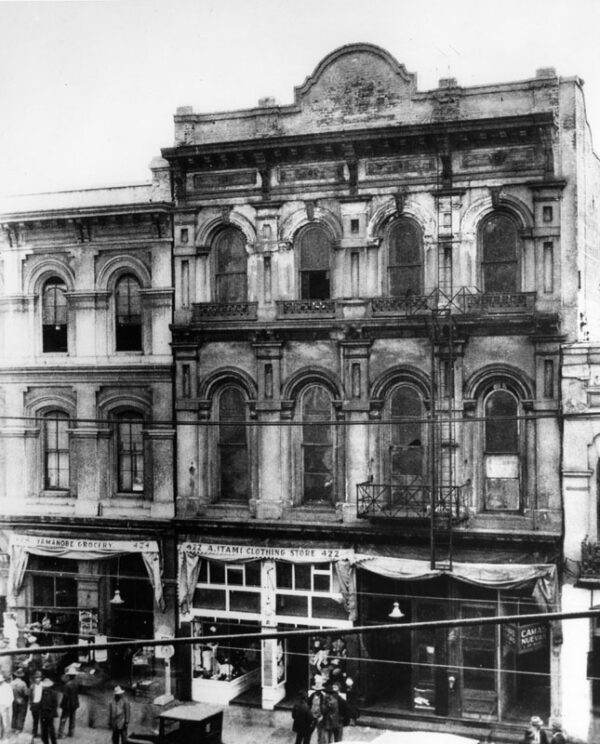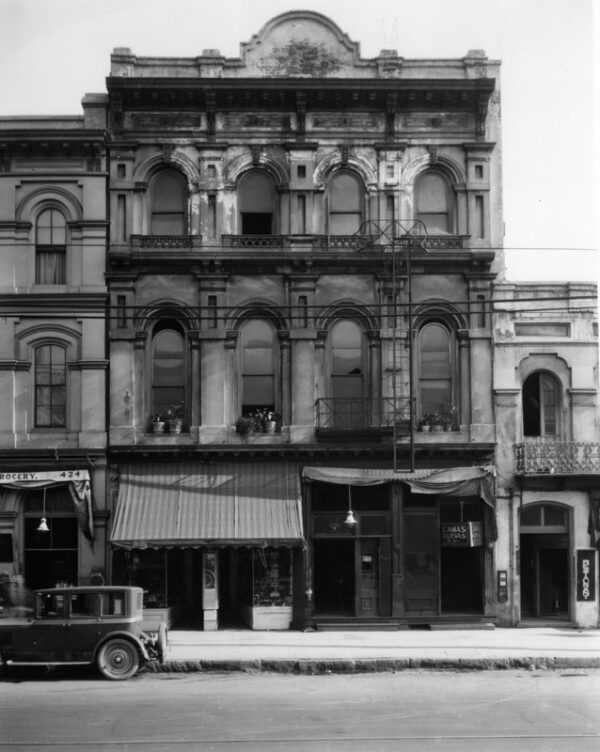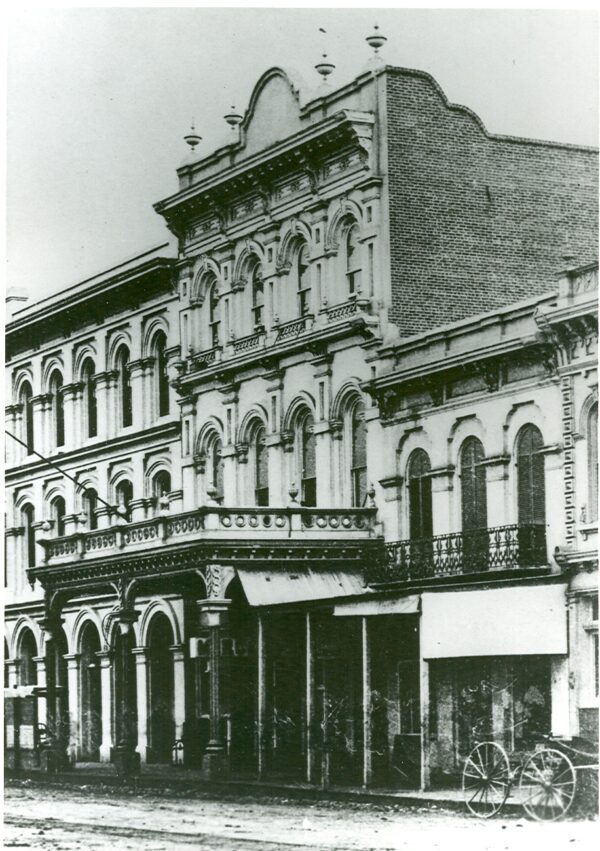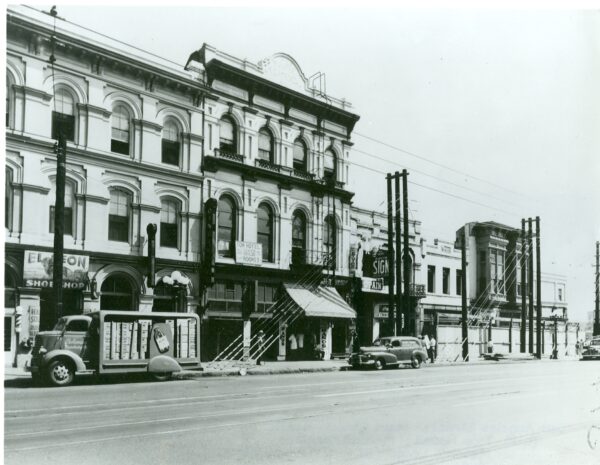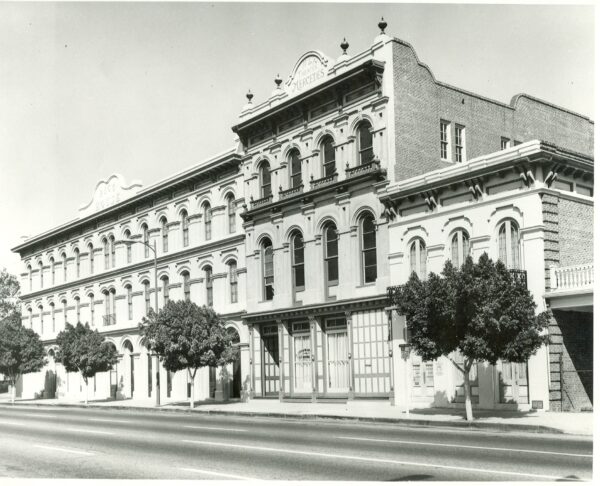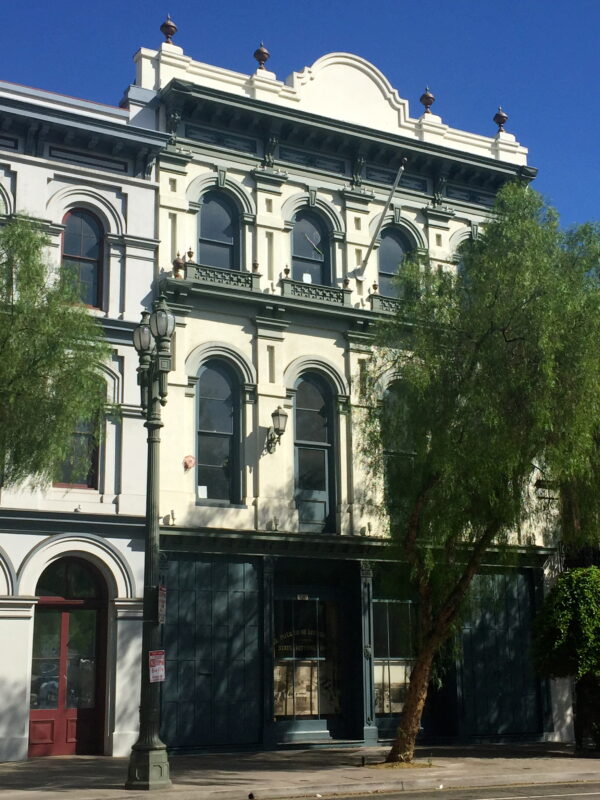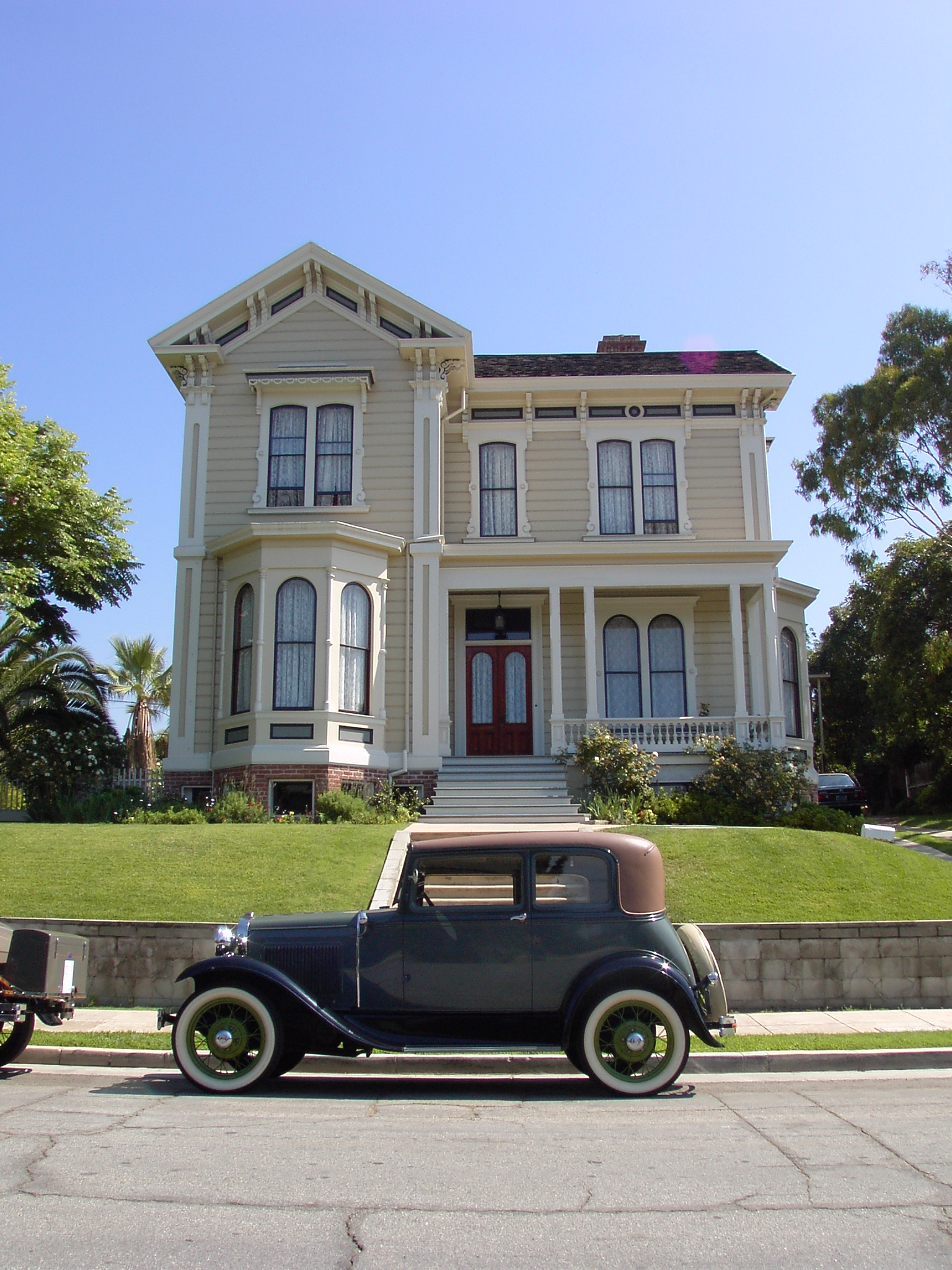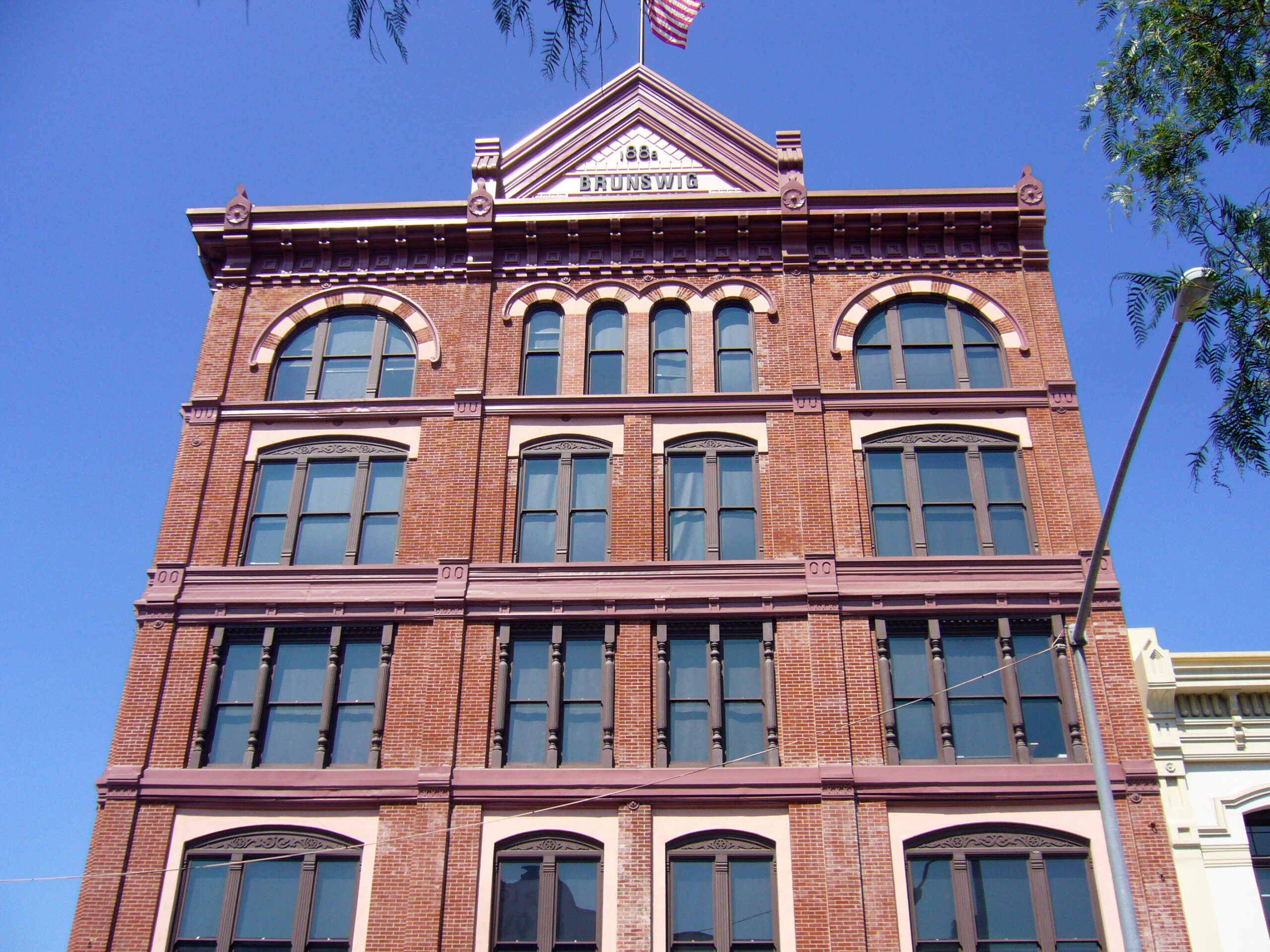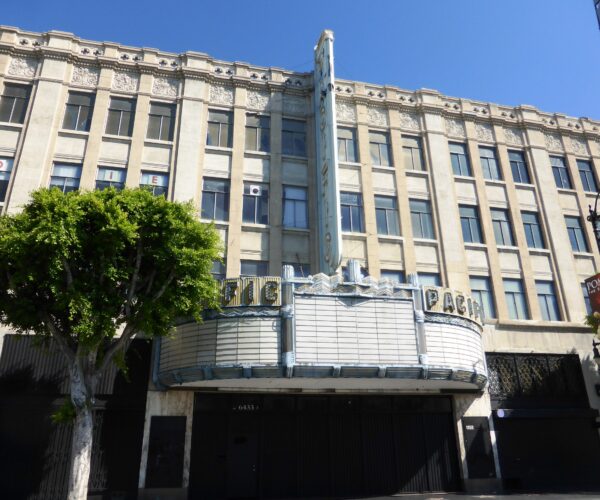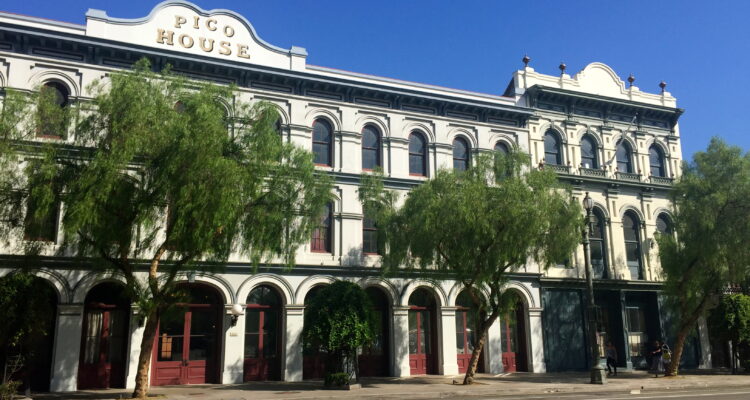
Place
Merced Theatre
Known for its masked balls at the turn of the twentieth century, the Merced Theatre is one of the oldest remaining LGBTQ spaces in Los Angeles.
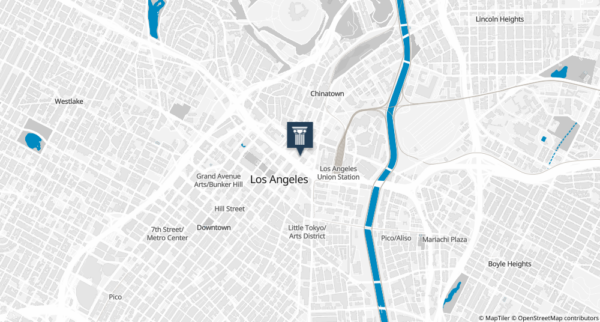
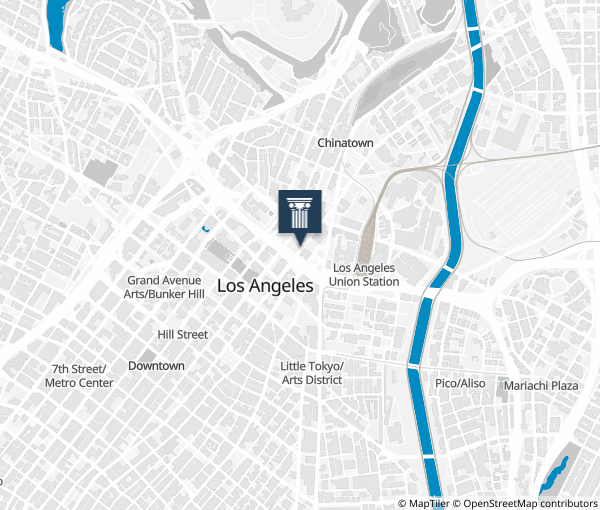
Place Details
Address
Get directions
Architect
Year
Style
Decade
Designation
Community
Designed by Ezra F. Kysor, the Merced Theatre was built for businessman William Abbot in 1870. It was the first building in Los Angeles constructed for the theatre arts and is currently one of the oldest surviving structures in the city.
Abbot named the Merced Theatre after his wife, Maria Merced Garcia. The playhouse opened on Janurary 30, 1871 and was at the heart of the performing arts scene in Los Angeles for several years.
In addition to hosting professional acting troupes, the Merced featured popular minstrel and burlesque shows. The venue also earned a reputation for its satirical performances.
Steep competition with neighboring theatres and a local outbreak of smallpox caused a dramatic decline in ticket sales after only five years. The Merced closed its doors in 1877, though it continued to serve as an informal entertainment venue.
At the turn of the twentieth century, the building offered a safe gathering place to LGBTQ individuals through its hosting of masked balls. At these costumed balls, LGBTQ individuals were able to socialize with one another under the safety of their concealed identities. They were also free to dress in clothing of the opposite gender without fear of persecution. Beginning in 1897, the building was used as a lodging house for queer men.
During the 1960s and 1980s, the Merced Theatre underwent a series of renovations on its facade and interior spaces. The building was vacant from 1985 through 2014, but it is currently undergoing a conversion for broadcast use.
